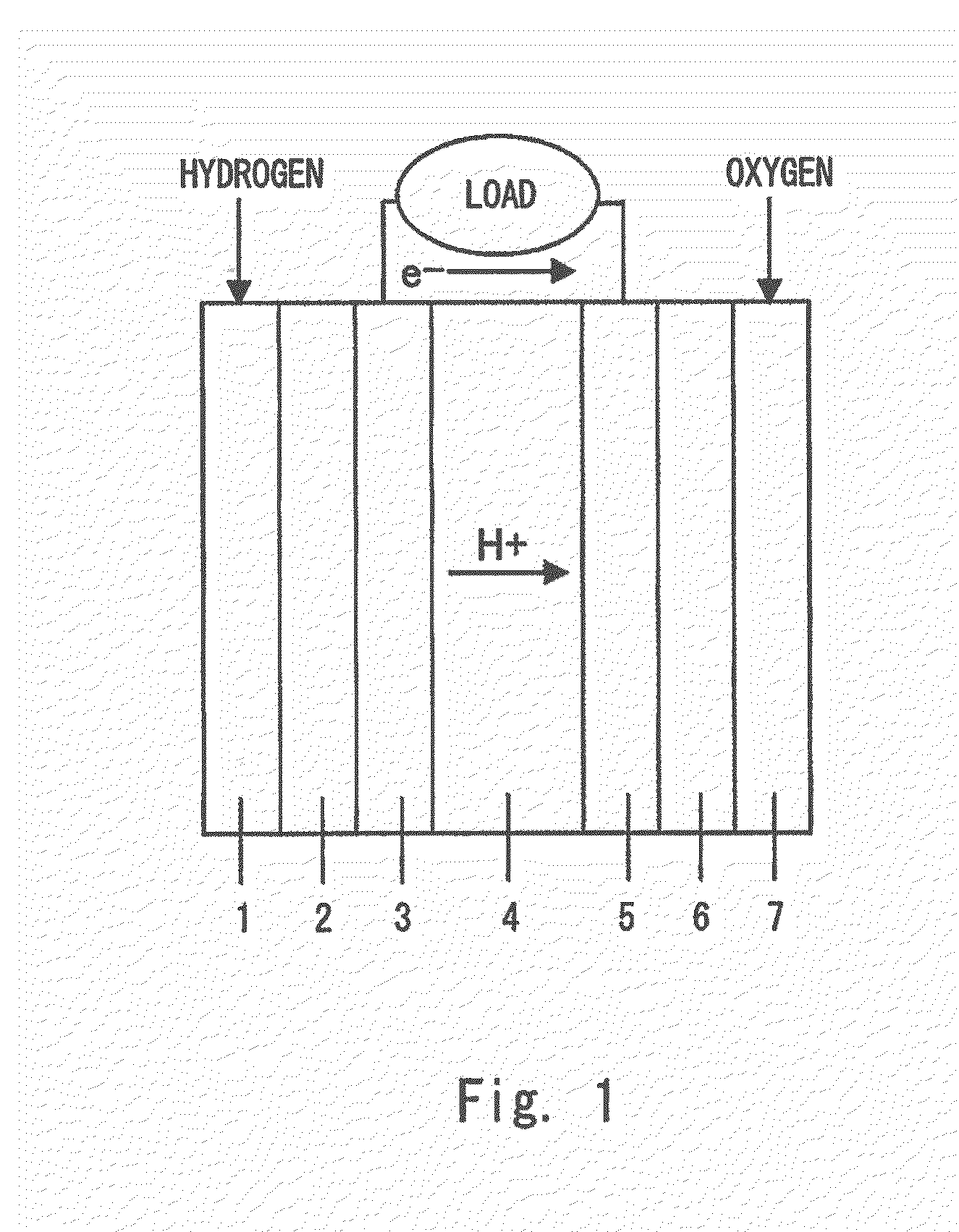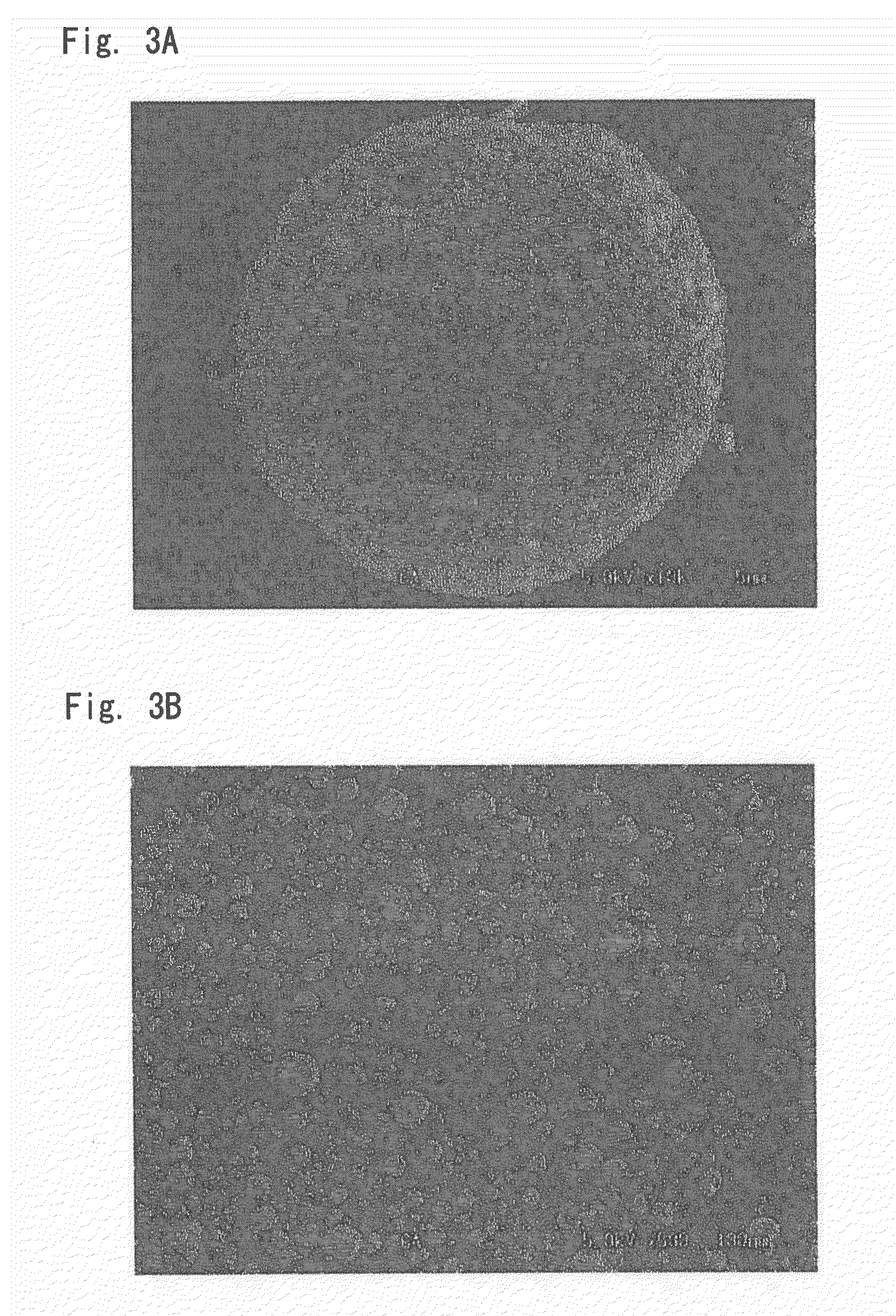Cell catalyst composition andmanufacturing method thereof, electrode material, and fuel cell
a cell catalyst and electrode material technology, applied in the direction of cell components, organic compounds/hydrides/coordination complex catalysts, physical/chemical process catalysts, etc., can solve the problems of high cost of various electrochemical devices, limited resources of electrode catalysts, and large number of used electrode catalysts per fuel cell, etc., to achieve poor power generation efficiency and poor production efficiency
- Summary
- Abstract
- Description
- Claims
- Application Information
AI Technical Summary
Benefits of technology
Problems solved by technology
Method used
Image
Examples
manufacture example 1-1
Carbon Catalyst (A1-1)
[0178]A precursor was obtained by weighing cobalt phthalocyanine (manufactured by Tokyo Chemical Industry Co., Ltd.) and Ketjen black (EC-600JD manufactured by Lion Corporation) so that their weight ratio became 1:1, and dry-mixing them in a mortar. The above-described precursor powder was put in a crucible made of alumina and heat-treated at 800° C. for two hours under a nitrogen atmosphere by an electric furnace. Then, a carbon catalyst (A1-1) was obtained by pulverizing the obtained carbide in a mortar. The molar ratio “N (nitrogen) / C (carbon)” of the carbon catalyst (A1-1) obtained by a CHN element analysis was 0.06, and the molar ratio “Co (cobalt) / C (carbon)” obtained by an ICP emission spectrochemical analysis and a CHN element analysis was 0.012. Further, the BET specific surface was 398 m2 / g and the tap density was 0.08 g / cm3.
manufacture example 1-2
Carbon Catalyst (A1-2)
[0179]A precursor was obtained by weighing iron phthalocyanine (manufactured by Sanyo Color Works, Ltd.) and Ketjen black (EC-600JD manufactured by Lion Corporation) so that their weight ratio became 1:1, and dry-mixing them in a mortar. The above-described precursor powder was put in a crucible made of alumina and heat-treated at 700° C. for two hours under a nitrogen atmosphere by an electric furnace. Then, a carbon catalyst (A1-2) was obtained by pulverizing the obtained carbide in a mortar. The molar ratio “N (nitrogen) / C (carbon)” of the carbon catalyst (A1-2) obtained by a CHN element analysis was 0.13, and the molar ratio “Fe (iron) / C (carbon)” obtained by an ICP emission spectrochemical analysis and a CHN element analysis was 0.013. Further, the BET specific surface was 295 m2 / g and the tap density was 0.08 g / cm3.
manufacture example 1-3
Carbon Catalyst (A1-3)
[0180]A precursor was obtained by weighing cobalt phthalocyanine (manufactured by Tokyo Chemical Industry Co., Ltd.) and graphene nano-platelets (xGnP-C-750 manufactured by XGSciences) so that their weight ratio became 1:1, and dry-mixing them in a mortar. The above-described precursor powder was put in a crucible made of alumina and heat-treated at 800° C. for two hours under a nitrogen atmosphere by an electric furnace. Then, a carbon catalyst (A1-3) was obtained by pulverizing the obtained carbide in a mortar. The molar ratio “N (nitrogen) / C (carbon)” of the carbon catalyst (A1-3) obtained by a CHN element analysis was 0.06, and the molar ratio “Co (cobalt) / C (carbon)” obtained by an ICP emission spectrochemical analysis and a CHN element analysis was 0.014. Further, the BET specific surface was 146 m2 / g and the tap density was 0.09 g / cm3.
PUM
| Property | Measurement | Unit |
|---|---|---|
| Length | aaaaa | aaaaa |
| Density | aaaaa | aaaaa |
| Particle diameter | aaaaa | aaaaa |
Abstract
Description
Claims
Application Information
 Login to View More
Login to View More - R&D
- Intellectual Property
- Life Sciences
- Materials
- Tech Scout
- Unparalleled Data Quality
- Higher Quality Content
- 60% Fewer Hallucinations
Browse by: Latest US Patents, China's latest patents, Technical Efficacy Thesaurus, Application Domain, Technology Topic, Popular Technical Reports.
© 2025 PatSnap. All rights reserved.Legal|Privacy policy|Modern Slavery Act Transparency Statement|Sitemap|About US| Contact US: help@patsnap.com



